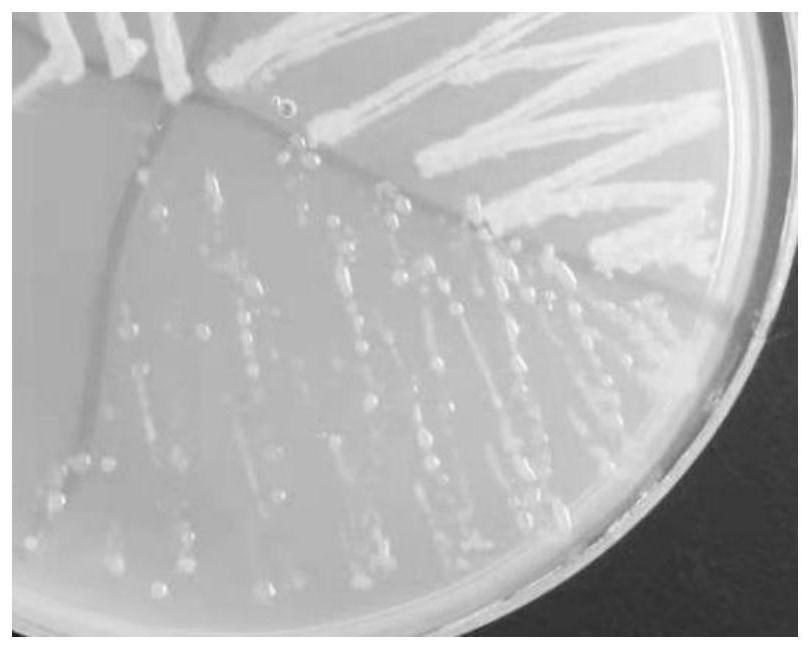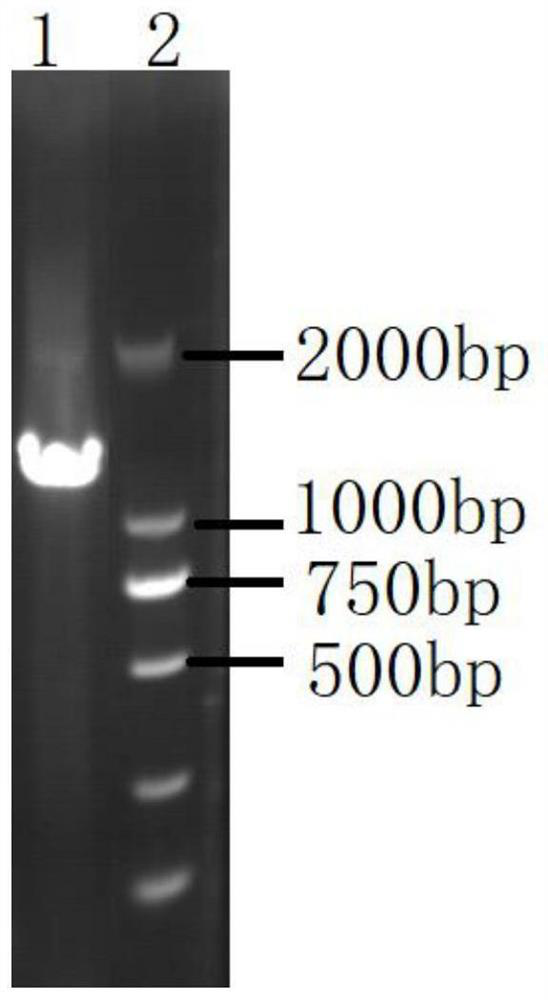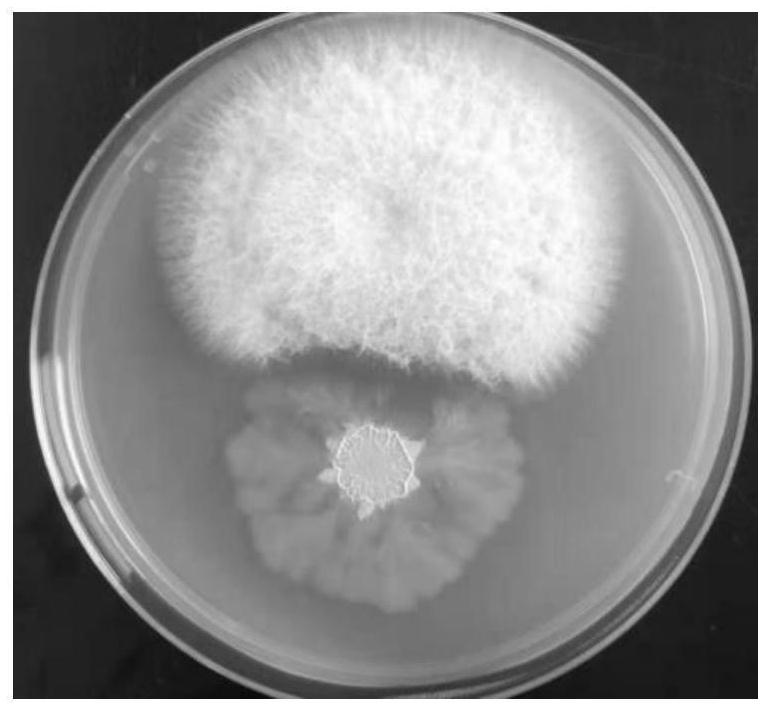Application of Burkholderia in Biological Control of Aspergillus flavus and Peanut Storage
A technology of Burkholderia and Kkholderia, which is applied in the application field of Burkholderia in Aspergillus flavus biological control and peanut storage, and can solve the problem of poor antagonistic effect of Aspergillus flavus and complicated culture conditions and other problems, to achieve good inhibitory effect, reduce infection, and prolong the effect of storage period
- Summary
- Abstract
- Description
- Claims
- Application Information
AI Technical Summary
Problems solved by technology
Method used
Image
Examples
Embodiment 1
[0027] Isolation, purification and identification of embodiment 1 bacterial strain G12
[0028] (1) Separation and purification
[0029] Bacteria were isolated from seawater off the coast of Qingdao by dilution culture method in May 2018. The specific steps are:
[0030] Take 1mL of seawater, add 100mL of sterilized water, and dilute, take the diluted solution and separate the bacterial strains on the LB solid plate, conduct preliminary classification according to the characteristics of the strains such as color and shape, and obtain pure strains by streaking and purification, numbered G12, Cultured in LB liquid medium, added glycerol with a final concentration of 20%, and frozen in a -20°C refrigerator for later use.
[0031] (2) Strain identification
[0032] According to the method described in "Berger Bacteria Identification Handbook" (eighth edition), the morphological characteristics and physiological and biochemical characteristics of strain G12 were identified, and ...
Embodiment 2
[0041] The inhibitory effect of embodiment 2 bacterial strain G12 to Aspergillus flavus
[0042] Adopt plate confrontation culture method, detect the inhibitory action of bacterial strain G12 to Aspergillus flavus; Specifically:
[0043] Take 10 μL of Aspergillus flavus NRRL 3357 (Aspergillus flavus NRRL 3357 standard strain, kindly provided by Professor He Zhumei of Sun Yat-sen University) spore liquid (concentration of spore liquid is 5.6×10 5 individuals / mL) were inoculated on GY medium solid plate (GY solid medium: glucose 20g, yeast powder 5g, agar 20g, water 1000mL), 50μL Burkholderia G12 bacterial liquid (concentration 2.8×10 8 cfu / mL) was inoculated around the Aspergillus flavus; the antibacterial test was carried out, and it was cultured statically in a 28°C incubator for 7 days, and the results were as follows: image 3 Shown: Aspergillus flavus is on the top of the plate, Burkholderia G12 is on the bottom, and the colony of Aspergillus flavus close to Burkholderia ...
Embodiment 3
[0044] Antagonism of Example 3 Burkholderia G12 to Aspergillus flavus in peanuts
[0045] The bottles are numbered A and B, and 18 peanuts are put into each bottle. Take sterilized 3mL LB medium, add 10μL concentration of 6.1×10 5Aspergillus flavus spores / mL were fully mixed and added to bottle A as a control group; 3 mL of cultured Burkholderia G12 spores (concentration 2.8×10 8 cfu / mL), adding 10 μL concentration is 5.6×10 5 A. flavus spores / mL, mix well and add to bottle B. Placed at 28°C, cultured for 6 days, if Figure 4 , the surface of the A bottle of peanuts is covered with Aspergillus flavus, which is yellow-green, almost covering the whole peanut; the surface of the B bottle of peanuts has no Aspergillus flavus, and the surface of the peanuts is clean and bright, showing a normal color; it shows that Burkholderia G12 Can significantly inhibit the growth of Aspergillus flavus in peanuts.
PUM
 Login to view more
Login to view more Abstract
Description
Claims
Application Information
 Login to view more
Login to view more - R&D Engineer
- R&D Manager
- IP Professional
- Industry Leading Data Capabilities
- Powerful AI technology
- Patent DNA Extraction
Browse by: Latest US Patents, China's latest patents, Technical Efficacy Thesaurus, Application Domain, Technology Topic.
© 2024 PatSnap. All rights reserved.Legal|Privacy policy|Modern Slavery Act Transparency Statement|Sitemap



